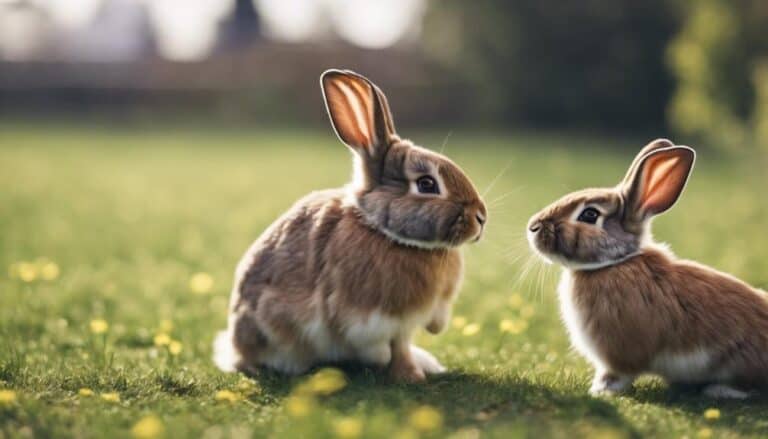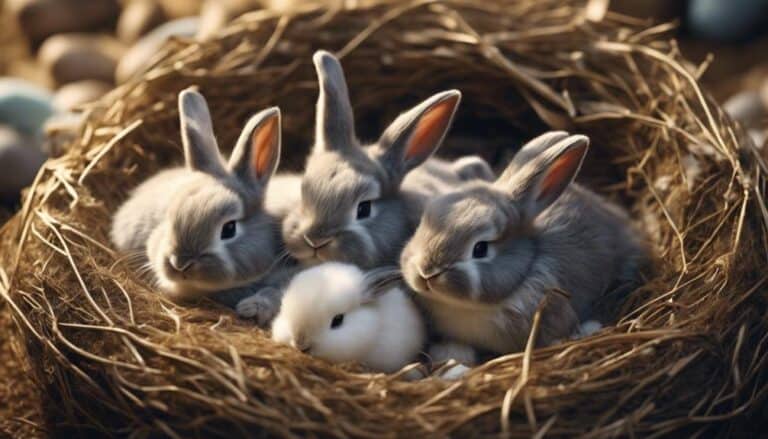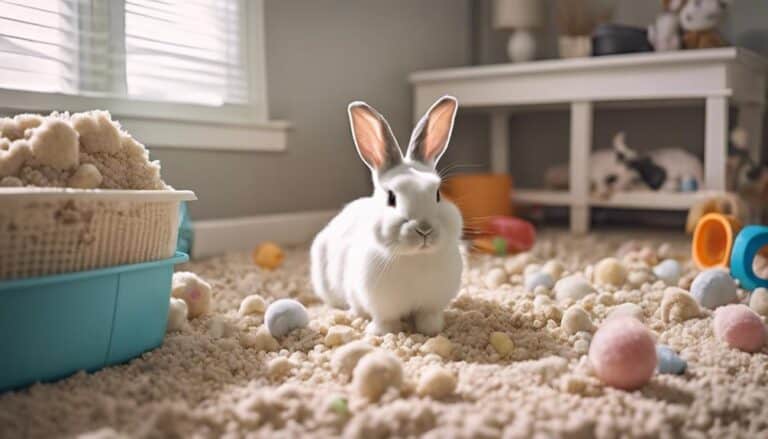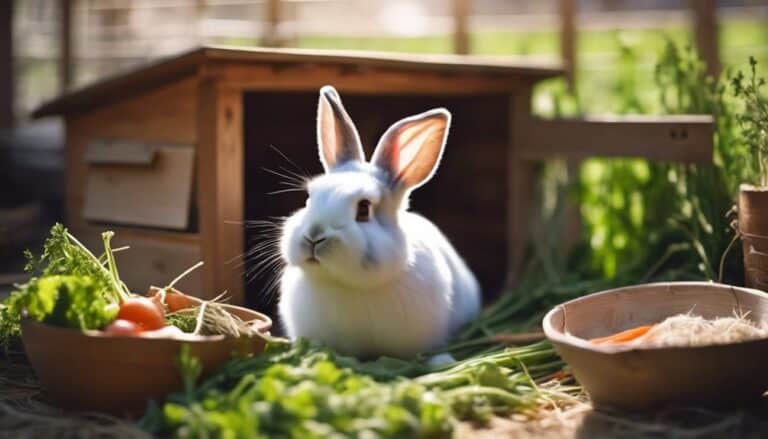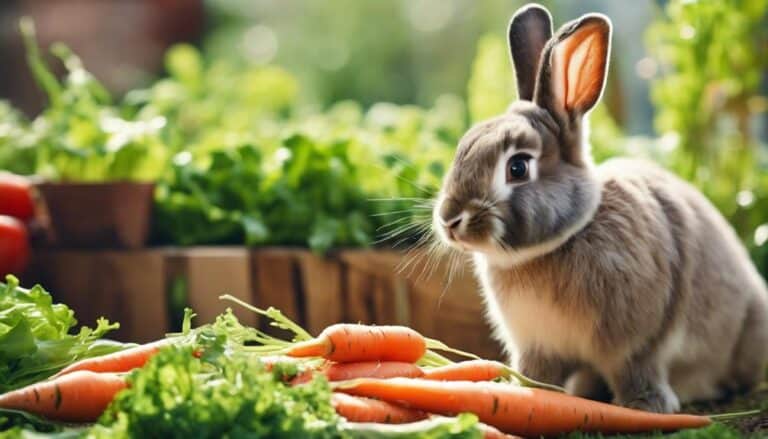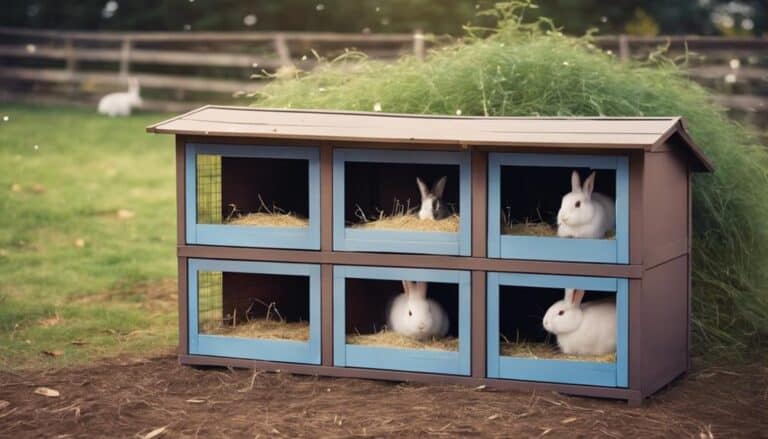If you're looking to elevate your bunny breeding game, mastering these top 5 tips is vital for success.
Starting with selecting the right breeders could be the ultimate game-changer, but that's just the beginning.
Delve into genetics, weaning, teat numbers, and more to set the stage for a fruitful breeding journey.
Discover how to optimize every aspect of the process, from conditioning to feeding, and reveal the secrets to maximizing your bunny breeding potential.
Get ready to level up your breeding skills with these essential tips!
Contents
Key Takeaways
- Select healthy breeding stock with strong genetics and good health history.
- Provide a balanced diet and necessary supplements for optimal reproduction.
- Monitor breeding conditions closely for successful mating and fertilization.
- Ensure proper care for offspring by creating a safe and warm environment.
Selecting Healthy Breeding Stock

When selecting healthy breeding stock for bunnies, prioritize choosing rabbits with a proven track record of producing robust offspring free from genetic defects. Quality rabbits are essential for successful rabbit breeding. Before making your selection, make sure that thorough health screenings and vet checks have been conducted. These health screenings are vital to identify any underlying issues that may impact the overall health of the breeding stock. Vet checks are necessary to confirm that the rabbits are in good health and free from any contagious diseases.
Selecting rabbits with good overall health and strong immune systems is paramount. Avoid breeding rabbits with any history of chronic illnesses or reproductive issues, as these may be passed down to their offspring. It's also important to make sure that the breeding stock has been properly vaccinated and dewormed to maintain the best health. By prioritizing the health and quality of the rabbits selected for breeding, you increase the likelihood of producing healthy offspring with desirable traits.
Providing Optimal Nutrition
Providing ideal nutrition for breeding rabbits involves meticulously crafting a balanced diet rich in essential nutrients to support their reproductive processes effectively. To guarantee peak breeding success, offer a combination of high-quality hay, fresh vegetables, and commercial rabbit pellets. These foods provide the necessary fiber, protein, vitamins, and minerals critical for pregnancy and lactation. Adjust the feed quantity based on the rabbit's size, age, and reproductive status to meet their increased nutritional needs during these critical stages.
During pregnancy and lactation, supplement the diet with calcium-rich foods like alfalfa hay to prevent calcium deficiency, which can lead to health issues for both the mother and offspring. Proper calcium levels are vital for the development of strong bones and teeth in newborn rabbits. Consulting with a rabbit nutrition specialist can help you create a customized feeding plan tailored to your breeding rabbits' specific requirements, ensuring their overall health and reproductive performance are maximized.
Monitoring Breeding Conditions
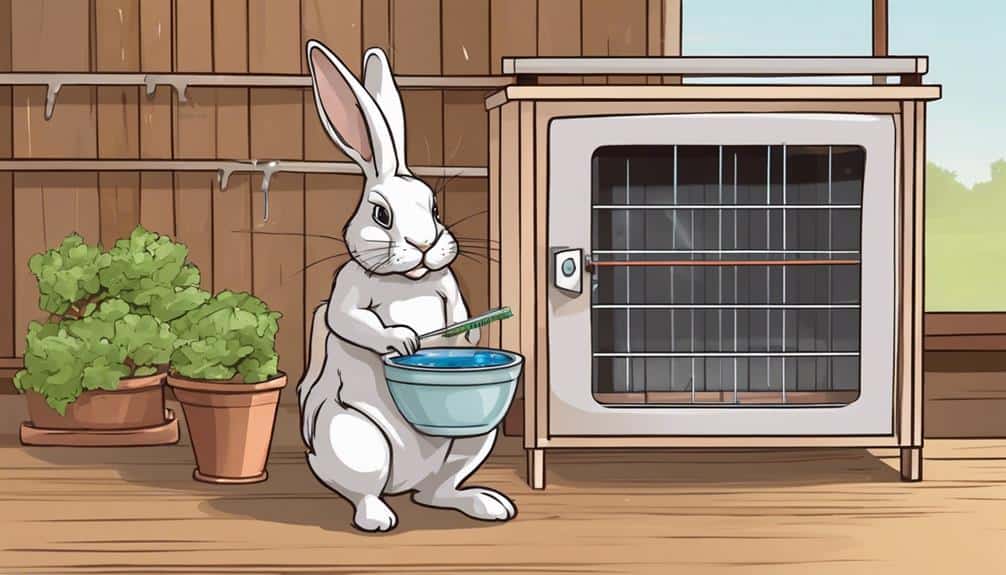
To guarantee successful rabbit breeding, meticulous monitoring of breeding conditions is essential for maximizing reproductive outcomes. When dealing with pregnant rabbits, it's vital to monitor mating behavior to ensure successful connections between the doe and buck.
Check for signs of receptivity in the doe, such as a dark pink, red, or purple vent area, which indicates readiness for mating. Keeping a record of breeding dates and outcomes will help track successful matings and plan for future breeding cycles.
Additionally, observe the buck's behavior post-mating for signs of successful fertilization, such as increased interest in the doe or a sense of satisfaction.
For large breed rabbits, it's especially important to maintain a suitable breeding environment with proper lighting and temperature control. Large breeds may have specific requirements to support successful breeding, so staying vigilant and attentive to their needs is key.
Timing Breeding Cycles Carefully
Monitoring breeding conditions plays a pivotal role in ensuring successful rabbit breeding. When it comes to timing breeding cycles carefully, precision is paramount for maximizing reproductive success. Understanding female readiness is key; females display signs of readiness by having a dark pink, red, or purple vent area. Once the female is ready, observe for successful mating cues from the buck, such as falling to the side and grunting.
For top results, consider rebreeding the female to the same male after eight hours to enhance the litter size. However, to avoid potential complications, it's advisable to palpate the female for pregnancy detection instead of immediate rebreeding. This approach helps in confirming pregnancy and prevents unnecessary stress on the female.
Ensuring Proper Care for Offspring
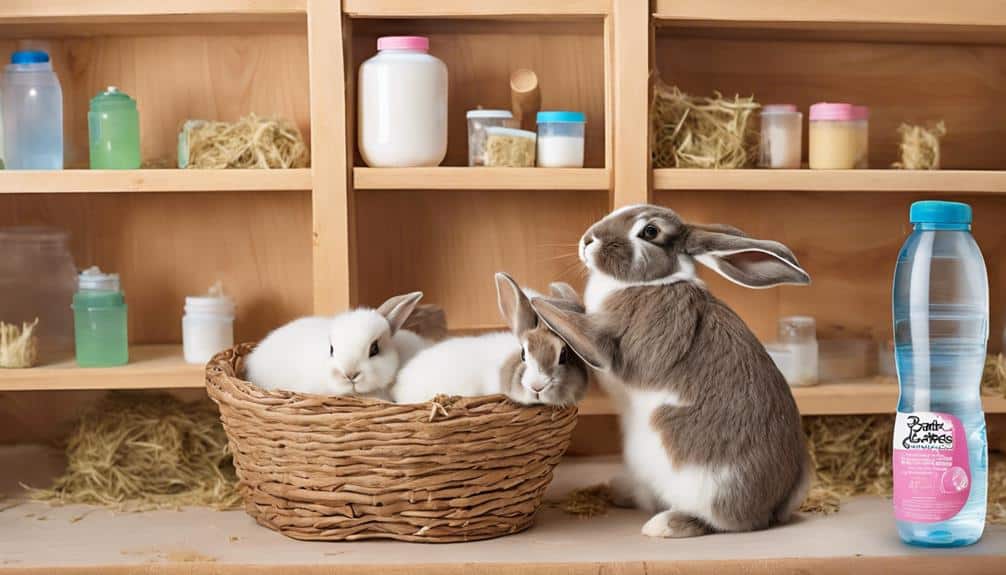
For the best care of newborn rabbit kits, establishing a warm, clean, and safe nesting area for the doe is essential. Small breed rabbits, like those studied at State University, require specific care to thrive. Here are some important tips to make the proper care for offspring:
- Provide a cozy nest box: Small breed rabbits prefer snug spaces, so offering a well-insulated nest box can make the difference in keeping the kits warm and secure.
- Monitor milk production: Pay close attention to the mother's milk production. If you notice a decrease, it could signal an issue that needs addressing promptly.
- Check for signs of distress: Regularly observe the newborn kits for any signs of distress, illness, or inadequate nursing. Quick intervention can be lifesaving.
- Consult with a vet: If you notice any abnormalities or health concerns in the kits, seeking guidance from a veterinarian at State University can help guarantee the well-being of the offspring.
Frequently Asked Questions
How Do I Know if My Rabbit Breeding Is Successful?
To confirm successful rabbit breeding, watch for pregnancy signs like a dark pink, red, or purple vent area. Look for breeding behavior where the buck falls to the side and grunts after mating. Monitor reproductive health and confirm pregnancy by palpating the doe by the 12th day.
Can You Breed Father and Daughter Rabbits?
You should not breed father and daughter rabbits due to genetic implications, health risks, and ethical concerns. Inbreeding can amplify both desirable and undesirable traits, leading to potential health issues in offspring. It's best to avoid this practice for responsible breeding.
How Do You Know When a Rabbit Is Ready to Mate?
When a rabbit is ready to mate, hormonal changes trigger physical signs like a darkened vent area. Behavioral cues include increased restlessness and receptiveness. Guarantee the breeding environment is quiet and secure. Observing these signs helps determine mating readiness.
How Do You Line Breed Rabbits?
When you line breed rabbits, consider inbreeding risks and genetic diversity. To manage health concerns, employ careful breeding techniques. Monitor inbreeding levels to avoid harmful recessive genes. Select and cull thoughtfully to enhance the overall quality of your rabbit herd.
Conclusion
As you begin on your journey to maximize bunny breeding success, remember that each aspect of care and management plays a vital role in the outcome. Just like tending to a delicate garden, nurturing your breeding stock, providing best nutrition, monitoring conditions, timing cycles carefully, and ensuring proper care for offspring are the seeds to success.
Cultivate your knowledge, tend to your bunnies with love and dedication, and watch your breeding endeavors flourish like a beautiful garden in full bloom.

